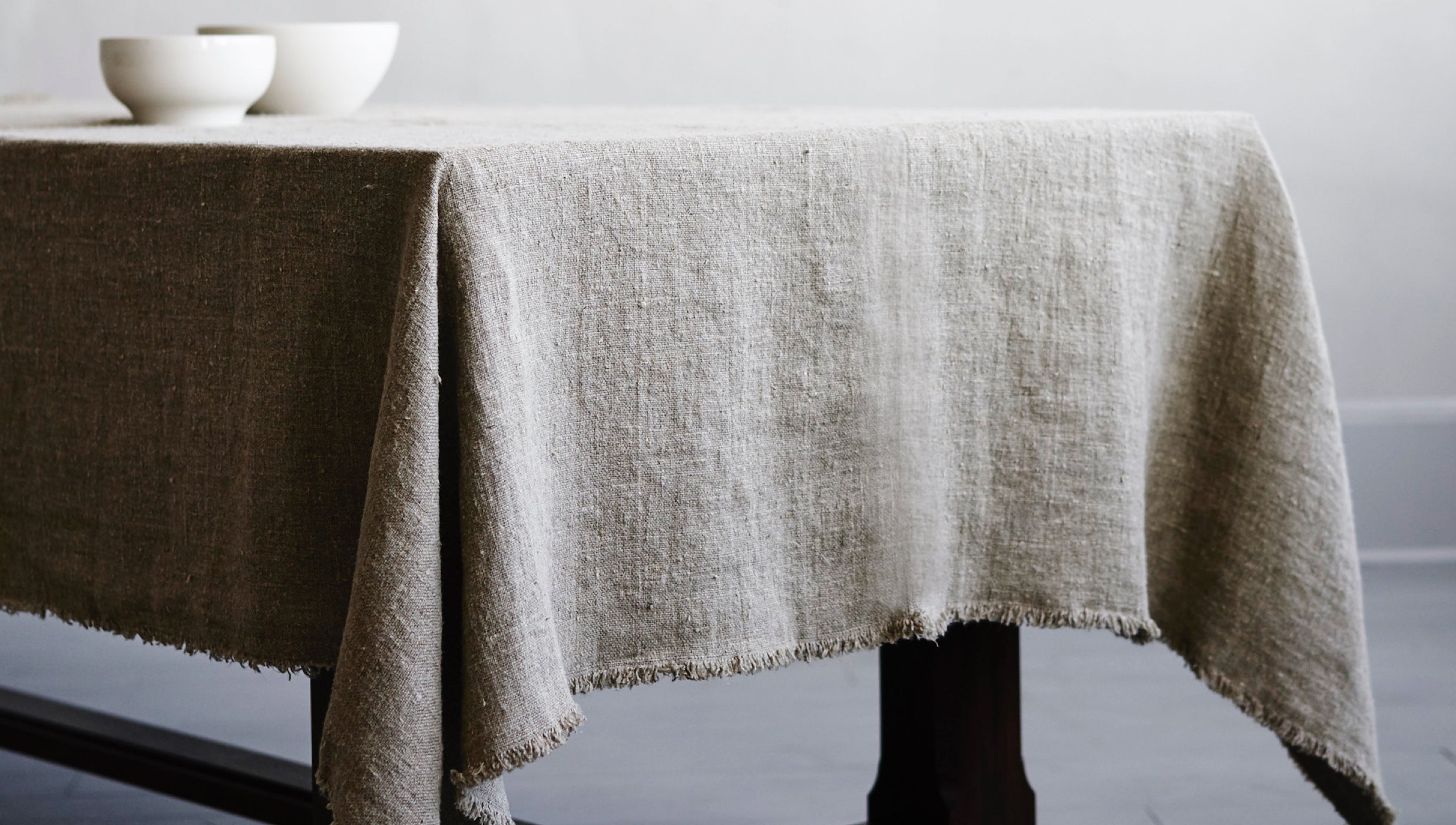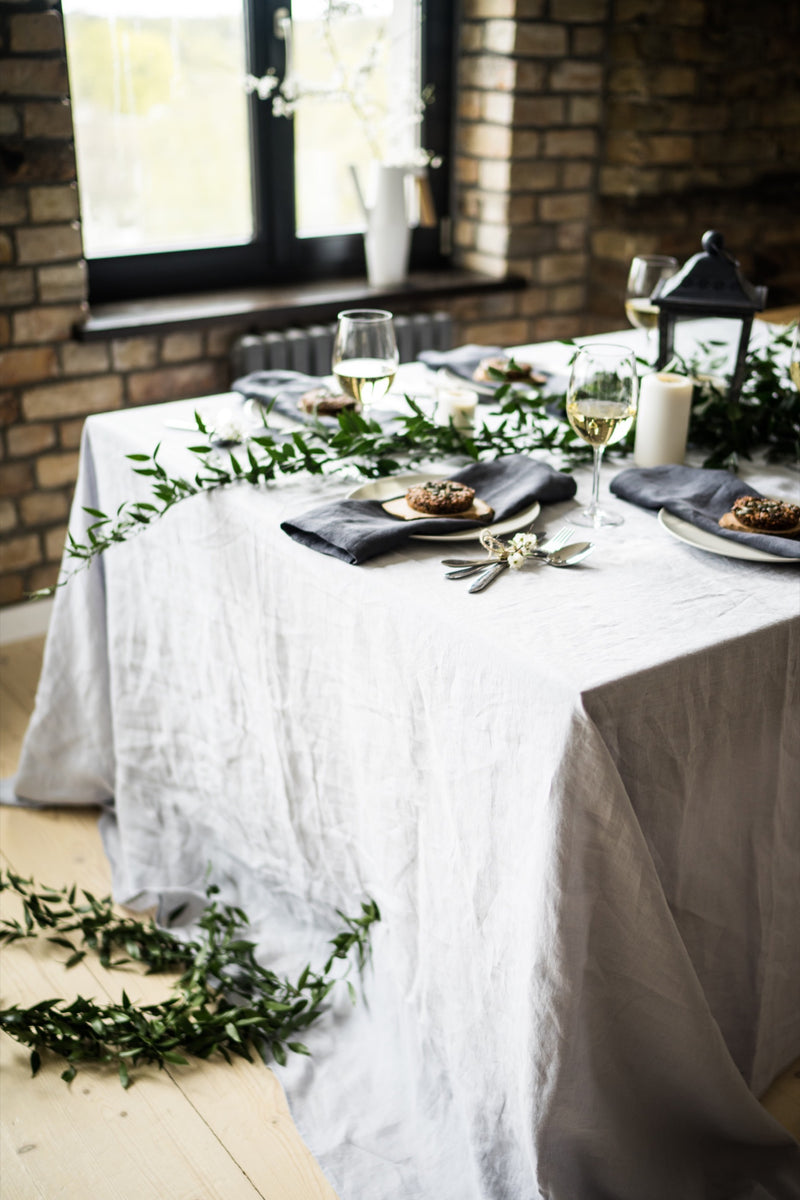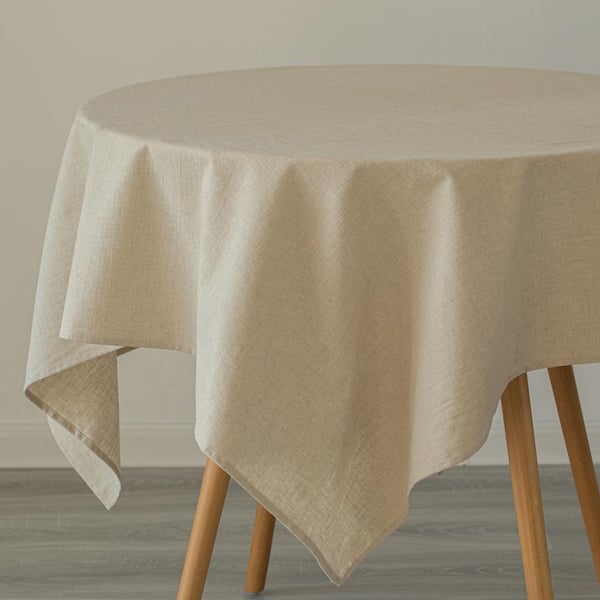Linen Textile Innovations: Checking Out Modern Trends and Creative Applications in Style and Textile Sector
From lasting production techniques to sophisticated weaving technologies, the evolution of linen is reshaping the landscape of the fabric industry. As we dig into the worlds of innovative layout applications and the development of linen blends and crossbreed fabrics, a brand-new phase unravels in which bed linen's duty in future fabric developments takes center phase.
Lasting Practices in Bed Linen Production
Lasting methods in bed linen manufacturing have ended up being progressively vital in the textile market's initiatives to lessen environmental impact and promote ethical sourcing techniques. Bed linen, an all-natural fiber originated from the flax plant, supplies a series of benefits such as breathability, biodegradability, and sturdiness. Nonetheless, typical techniques of bed linen production can entail considerable water usage, chemical usage, and energy-intensive procedures.
To attend to these obstacles, many textile producers are adopting lasting methods throughout the linen production process. This consists of sourcing flax from natural ranches that avoid damaging pesticides and chemicals, carrying out water-efficient retting methods to essence fibers from the flax stalks, and utilizing eco-friendly dyes and surfaces. In addition, some firms are buying renewable resource resources to power their manufacturing facilities and reducing waste through recycling and upcycling initiatives.
Technological Improvements in Bed Linen Weaving
With the growing emphasis on sustainable practices in linen manufacturing, the fabric market is currently experiencing a surge in technological developments specifically targeted at revolutionizing the art of linen weaving. These technologies are reshaping the method linen textiles are generated, using increased effectiveness, quality, and creativity in weaving methods.
Among the vital technical innovations in linen weaving is the combination of computerized looms. These sophisticated looms are equipped with software that permits complex and complex styles to be woven with accuracy. By digitizing the weaving process, suppliers can attain greater uniformity and precision in their linen textiles.
Furthermore, advancements in yarn spinning technology have enabled the manufacturing of finer and even more durable linen threads - table cloths. This results in softer and smoother bed linen textiles that maintain their top quality also after several uses and laundries
In addition, the development of environmentally friendly dyeing processes and finishes for bed linen materials is gaining traction. These sustainable methods not just reduce the ecological influence yet likewise deal with the enhancing customer need for ethically generated fabrics.
Creative Style Applications for Linen
Ingenious imaginative methods are increasingly shaping the innovative style applications for bed linen in the textile market. Bed linen's natural aesthetic appeal and ability to mix with other materials make it a favorite choice for creating special garments and accessories that cater to the eco mindful customer.
In addition, designers are try out linen in home decor, utilizing its breathable and long lasting nature to craft fashionable home furnishings such as curtains, bed linen, and upholstery. The structure and drape of bed linen bring a feeling of sophistication and comfort to interior spaces, including a touch of beauty to modern-day homes.

Linen Blends and Hybrid Fabrics

Hybrid textiles, on the various other hand, take the idea of blending an action additionally by integrating additional components such as metallic threads, recycled materials, or conductive fibers. These innovative fabrics not only increase the layout possibilities however additionally present useful elements like conductivity, antimicrobial residential properties, or enhanced resilience. Hybrid fabrics are significantly being utilized in numerous industries, including style, interior style, and technical fabrics, where the demand for multifunctional products is on the rise.
Linen's Role in Future Fabric Innovations

In the realm of future textile developments, bed linen is expected to be an essential player in the development of innovative practical fabrics. Designers and scientists are discovering methods to improve bed linen's fundamental top qualities with technical advancements, such as incorporating smart textiles, nanotechnology, and efficiency finishes. These developments intend to boost linen's performance qualities, making view publisher site it appropriate for a broader variety of applications, from activewear to safety clothing.
Additionally, the mix of linen with other all-natural or artificial fibers opens unlimited opportunities for producing novel textiles with distinct residential or commercial properties and capabilities. By leveraging bed linen's attributes and checking out cutting-edge blends, the textile industry is poised to present exciting growths that satisfy evolving consumer needs and sustainability requirements.
Conclusion
Finally, the expedition of lasting practices, technological innovations, imaginative layout applications, linen blends, and its role in future fabric technologies highlight the continual advancement of linen textile in the modern style and fabric industry. With a focus on technology and creative thinking, the adaptability and environmentally friendly nature of bed linen make it an important material for developers and manufacturers alike, leading the way for additional growths and advancements in the field of textiles.
As we delve into the realms of innovative design applications and the appearance of linen blends and hybrid materials, a new phase unfolds in which bed linen's function in future textile technologies takes center phase.
Discovering the fusion of linen with various other fabrics has actually led to the emergence of cutting-edge blends and hybrid textiles in the contemporary fabric industry. Linen blends provide a special mix of the characteristics of bed linen with those of various other fibers, resulting in fabrics that possess boosted buildings such as enhanced sturdiness, boosted draping, and decreased wrinkling.The advancement of linen blends and crossbreed fabrics has actually established the phase for Linen to play an essential function in driving future textile innovations.In the realm of future fabric advancements, bed linen is anticipated to be a key gamer in the development of innovative functional fabrics.
Comments on “Lovely Table Cloths: Enhance Your Dining-room Design”